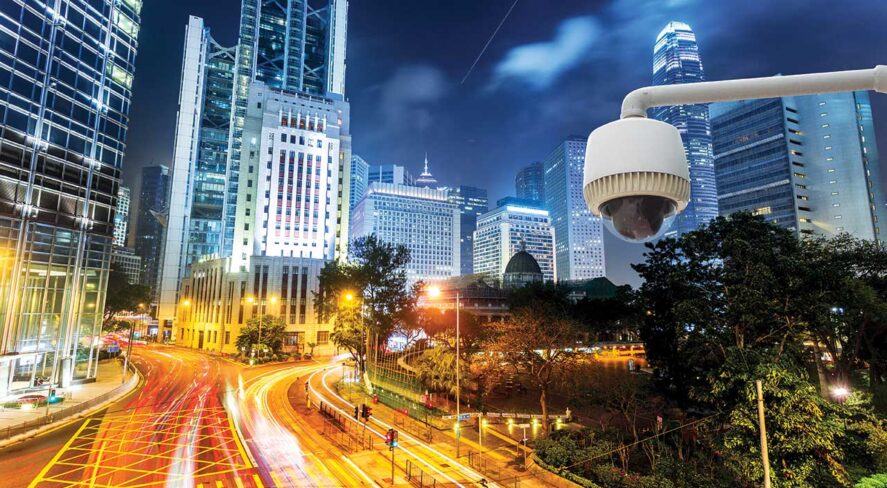Improving Visibility While Preserving Video Integrity

CNN-based low-light enhancement avoids the pitfalls of generative artificial intelligence

In the rapidly evolving world of AI-powered imaging, it is easy to conflate all “AI enhancement” with generative methods. But when it comes to critical applications like surveillance, the distinction between generative and nongenerative artificial intelligence, convolutional neural network (CNN)-based enhancement is not just technical, it is fundamental to trust, integrity and evidence reliability.
Surveillance cameras often operate under ultra-low-light conditions, from a few lux down to near-total darkness. In such environments, image sensors struggle. Noise overwhelms the signal, leaving both human vision and automated object detection largely ineffective. Grainy, dark, unclear footage compromises situational awareness and system performance.
CNN-based low-light enhancement addresses this challenge. Unlike generative AI, which generates new data, CNN-based enhancement operates in real time within the camera pipeline as an embedded edge AI solution. It improves both human and machine vision by suppressing noise and boosting object detection accuracy in low-light scenes – without generating new content, such as new pixels.
Generative models, such as generative adversarial networks (GANs) and diffusion models, are designed to fill in missing details by making assumptions about what could be present. While powerful in creative imaging, generative approaches raise concerns in surveillance since they may alter details or even introduce new ones that were never captured by the camera.
In contrast, CNN-based enhancement focuses solely on improving the existing signal. Every processed pixel corresponds directly to the input data. The system reduces noise, clarifies details, and increases brightness while preserving the integrity of the footage. It does not imagine what is missing, it reveals what is already hidden beneath the noise of low light or sensor limitations.
This distinction is especially important when video footage might serve as forensic evidence. Enhancing visibility without altering content ensures that the output remains a truthful representation of the recorded scene, a key requirement for investigative and evidentiary use.
Why AI Excels in Low-Light Imaging
Traditional image signal processors (ISPs) struggle to fully separate noise from signal, and amplifying the remaining signal also amplifies noise, degrading visual image quality. CNN-based systems, however, suppress noise so effectively that higher gain can be applied without sacrificing clarity. The result is video that is not only sharper and clearer, but also significantly brighter, recovering usable details even in near-total darkness where human vision fails.
Unlike fixed-algorithm ISP pipelines, CNN-based methods are trained on diverse, low-light data with complex noise patterns and light distributions. Learning is supervised and uses noisy videos together with their clean counterparts so that the system can learn how to separate meaningful content from a poor quality video stream. This adaptive intelligence allows for more effective enhancement across challenging scenarios while preserving fidelity to the original scene.
In an era of deepfakes and synthetic imagery, it is crucial to distinguish technologies that actually enhance visibility from those that generate new data. CNN-based low-light enhancement offers a powerful, trustworthy solution, improving the clarity, brightness and usability of surveillance video while maintaining its evidentiary integrity.
Real-World Use Cases
CNN-based low-light enhancement plays a vital role across multiple real-world applications where operational accuracy is critical but visibility is limited.
- In public safety and law enforcement, it enables surveillance in poorly lit areas, improving facial recognition, object identification, and video admissibility.
- Transportation systems benefit from enhanced camera feeds for night-time incident detection and safety in autonomous driving.
- Critical infrastructure sites, such as power plants and ports, require 24/7 monitoring, often in low-light conditions to reduce energy use and light pollution. CNN-enhanced footage ensures better detection of threats or anomalies without relying on thermal imaging.
- Border surveillance and military operations use real-time, low-light video to distinguish movements in remote or tactical environments where artificial lighting could compromise security.
- In the retail and commercial sector, CNN-based enhancement improves security in dimly lit areas like warehouses and alleys, supporting both crime prevention and investigation.
In critical environments where security, accountability and clarity are non-negotiable, how video is enhanced is just as important as the outcome. CNN-based low-light enhancement offers a real-time approach that emphasizes signal fidelity rather than synthetic reconstruction. Unlike generative AI, which can introduce artificial elements, CNN methods are able to uncover what is actually present in the footage, strengthening operational decisions. As imaging technologies advance, this focus on preserving the authenticity of original footage ensures that improved visibility never compromises the truth.
